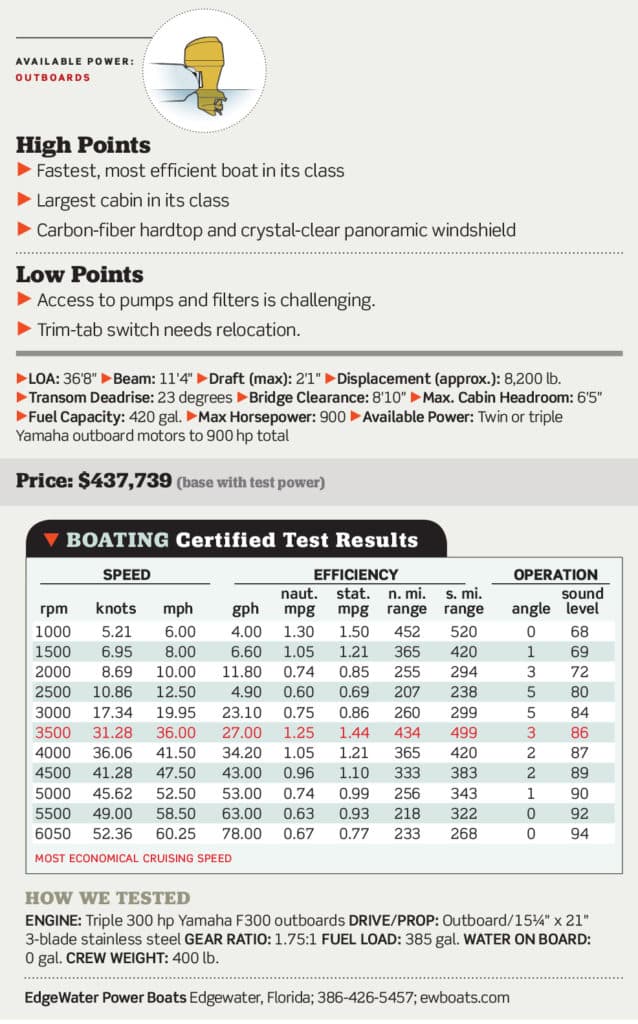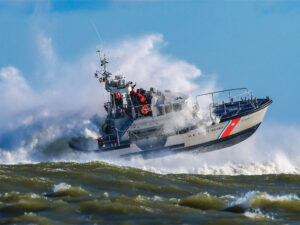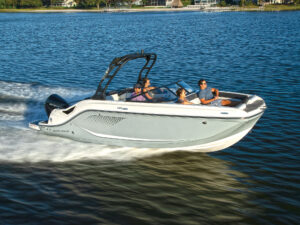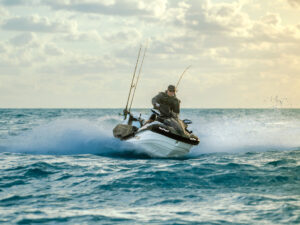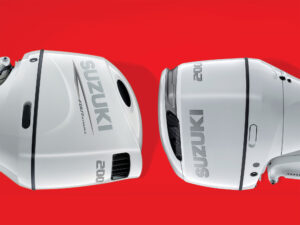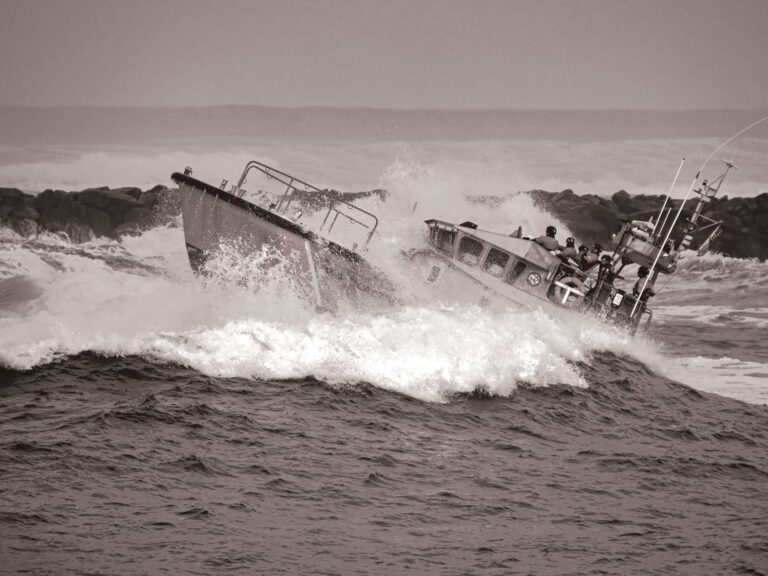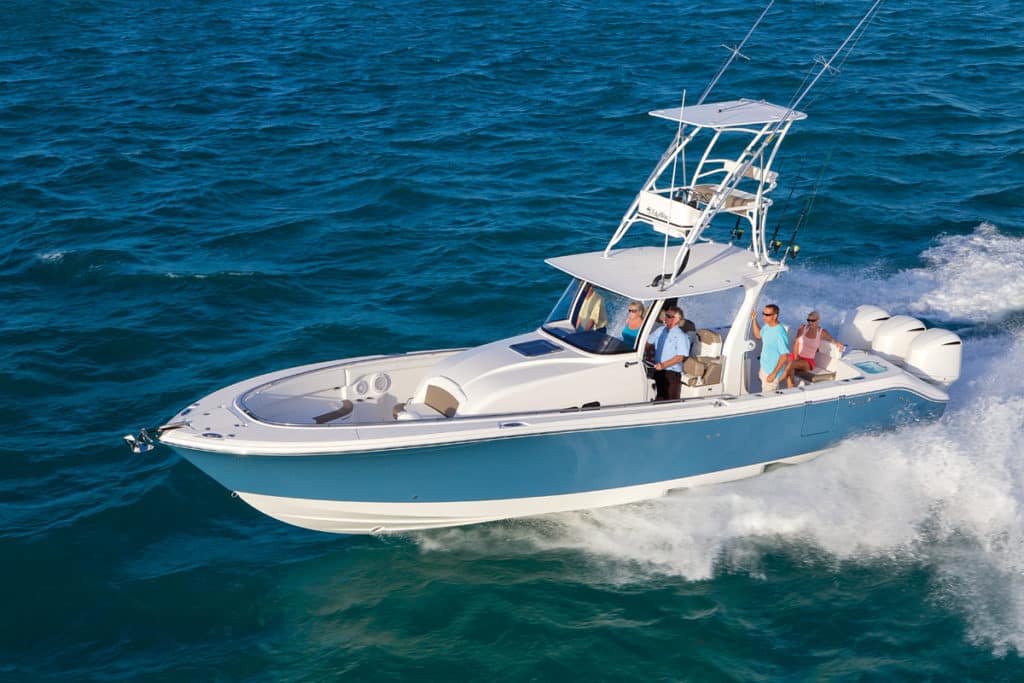
Sure, the solid-glass windscreen fitted to EdgeWater’s 368CC is so carefully crafted that it provides a panoramic view with no distortion, despite its curved sides. But the great visibility from the helm we noted while running this mega console is part of a much bigger story, one that weaves through the details of design and construction and propulsion. Find out what we discovered during our test of EdgeWater’s 368CC.
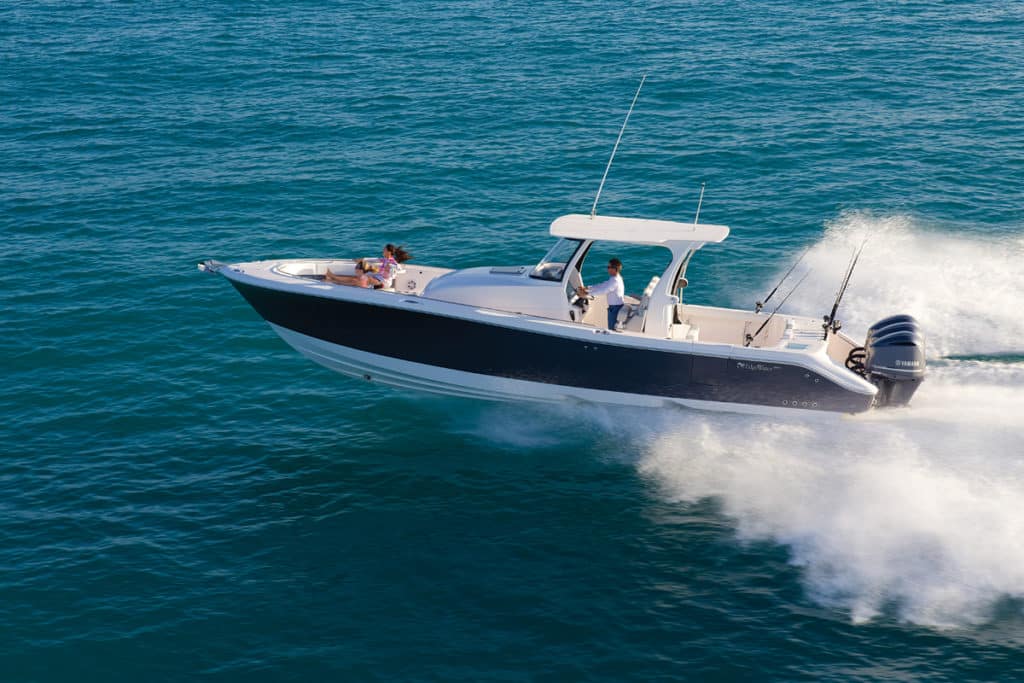
The 368CC weighs less than competitive craft, displacing 8,200 pounds. Compare that with the 11,500-pound Everglades 355, the 12,850 pound Grady-White Canyon 376 or the 13,500 pound Boston Whaler 370 Outrage. As savvy boaters know, the power-to-weight ratio reigns as a determiner of speed and efficiency. At 9.2 horsepower-per-pound, the 368 CC boasts best in class for this spec.
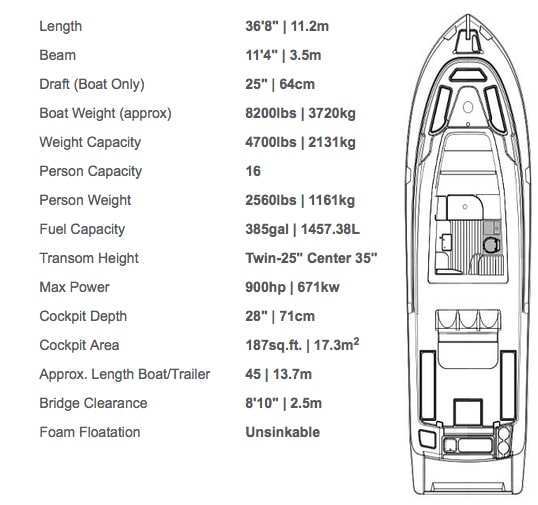
EdgeWater builds the 368 this light without compromising strength and durability thanks to its Single Piece Infusion technology. The SPI process utilizes high-density fiberglass wetted with 50 percent less resin than conventional fiberglass lamination. The glass and structural elements, such as the stringers and transom, are placed in the mold dry, then a vacuum bag is applied and the resin pulled through. This helps to ensure complete chemical bonding and creates a stiff, strong, light boat.
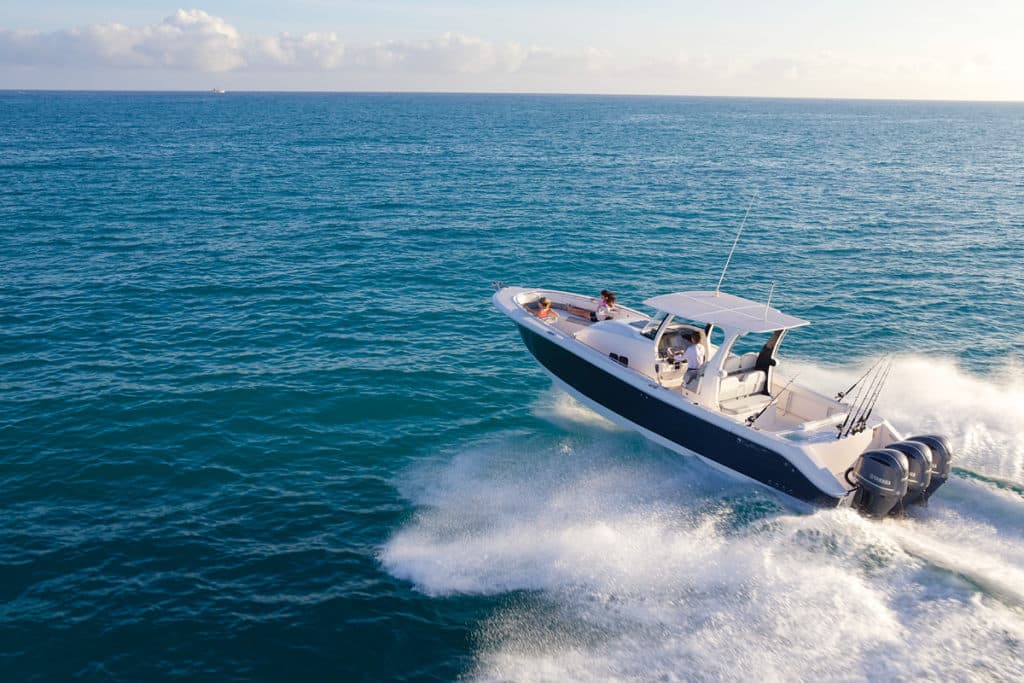
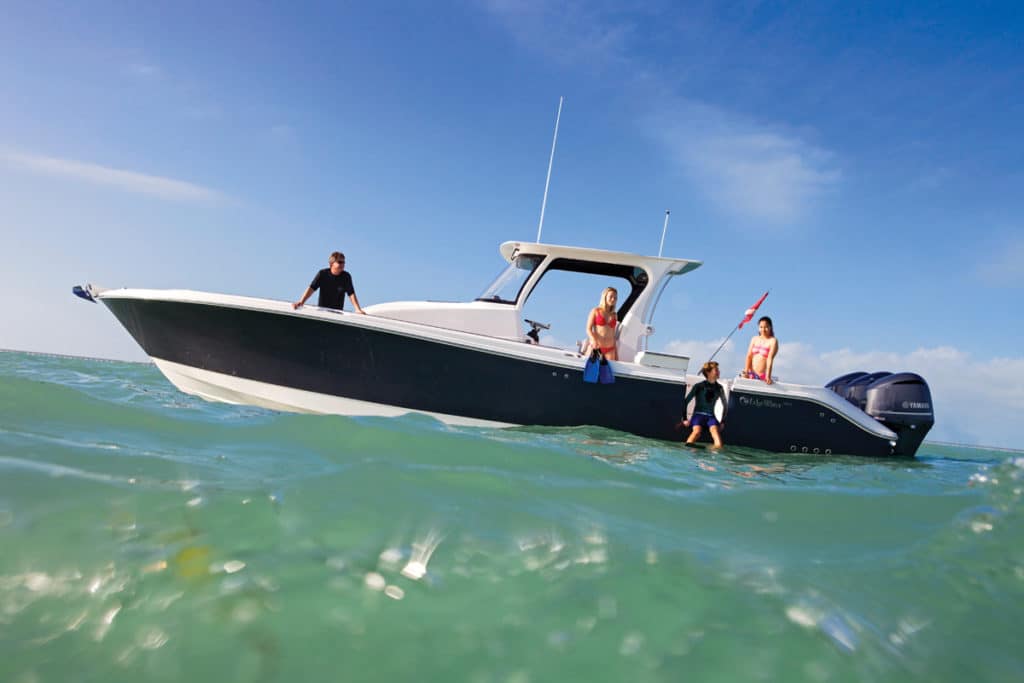
Note that the 368CC, like all EdgeWater boats, is unsinkable. All structural components and spaces are filled with closed-cell PVC foam for maximum buoyancy and level flotation. Combined with SPI, the unsinkable quality makes the 368CC a safe boat in which to venture offshore.
As important as weight, the EdgeWater 368CC is also a stepped hull, a design element that enhances speed and efficiency. In this case, there are two steps that divide the running surface into three panels. While the lift-enhancing, drag-reducing aspects of steps are touted widely (and they are in full force on the 368CC), little is said of the fact that with a stepped hull, the designers can “build in” the trim of the boat; the steps are located and sized to present the ideal angle of attack in the targeted speed ranges.
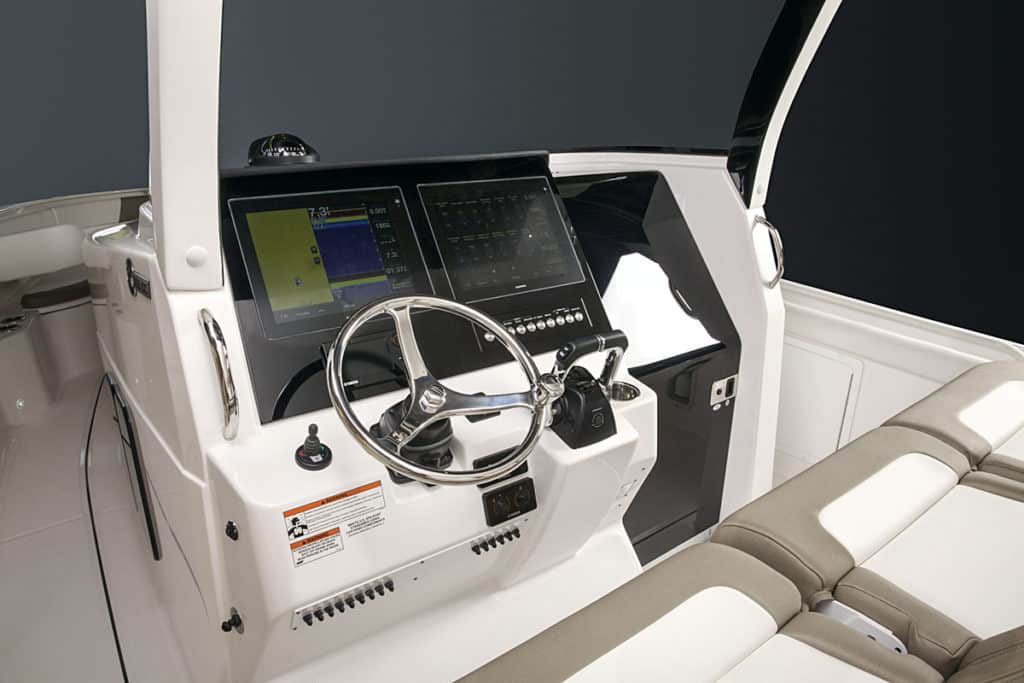
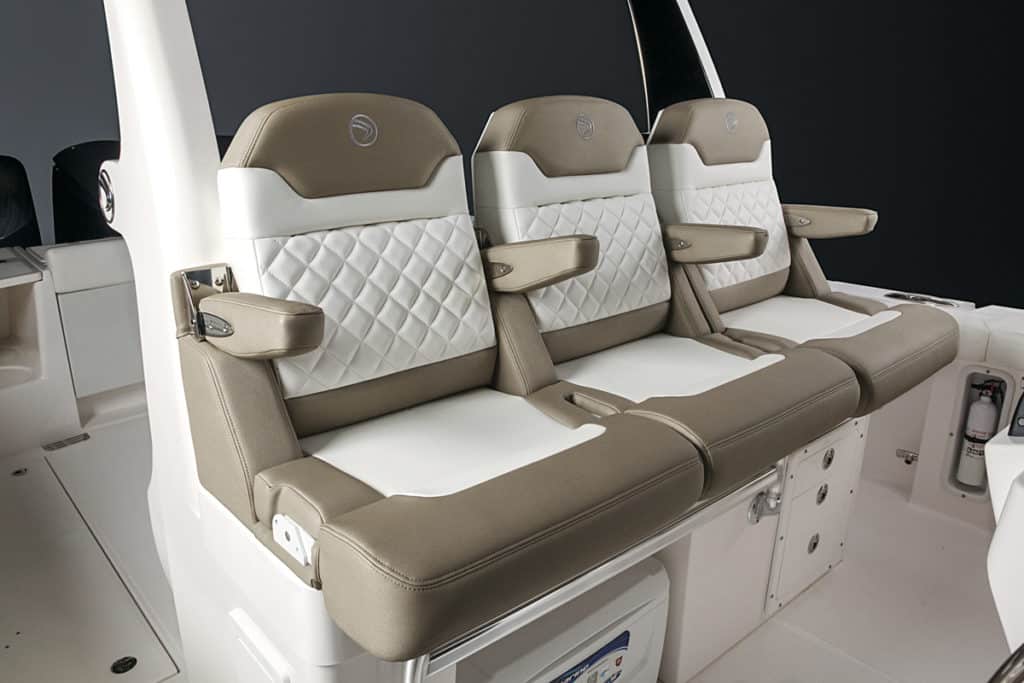
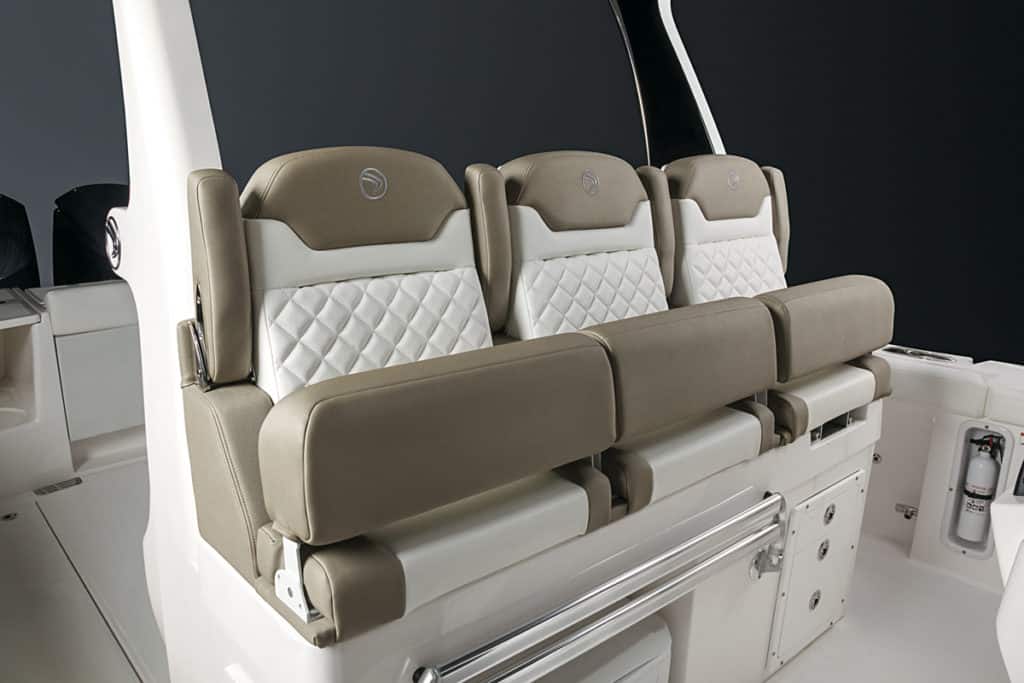
All of the above is discussion. To experience the effects of combining an optimized power-to-weight ratio with a double-stepped hull, grab the helm and put the levers in the corner. With triple 300 hp Yamaha F300 outboards, our 368CC test boat tore out of the hole and reached a blistering 60 mph at wide-open throttle. At 36 mph, or 3,500 rpm, the 368CC cruises comfortably and achieves a stellar 1.3 mpg.
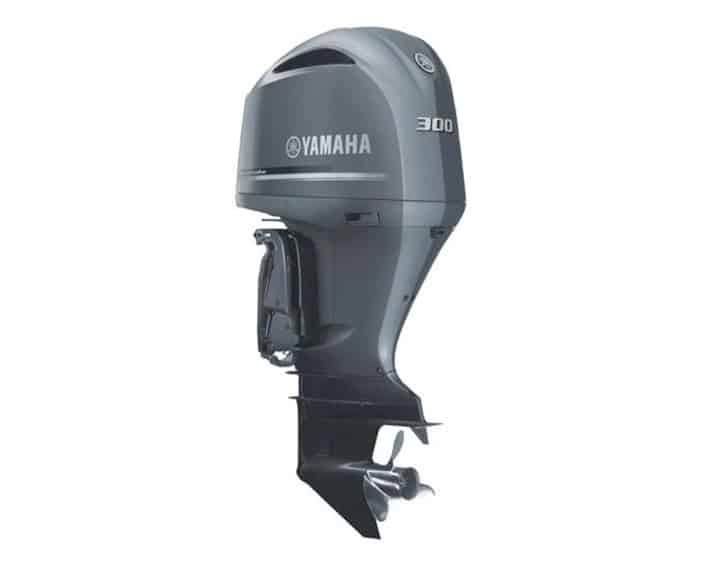
Check out performance results from a number of other boats that we’ve tested with Yamaha F300 outboards.
The 368’s ride proved impressive too. We threw the wheel port and starboard at speeds approaching 40 mph. The 368CC carved around those turns with a confident feel. Test day was flat, but the boat clove through the wakes we generated for test purposes. Notably, the 368CC stayed on plane as slow as 19 mph, which is a further testament to the hull’s efficiency and a nice ability to have in reserve should sea conditions truly deteriorate. It planes quickly and on the level, further contributing to the great visibility from the helm. We do wish the trim-tab switches were not right in front of the throttle levers where we discovered them cumbersome to operate.
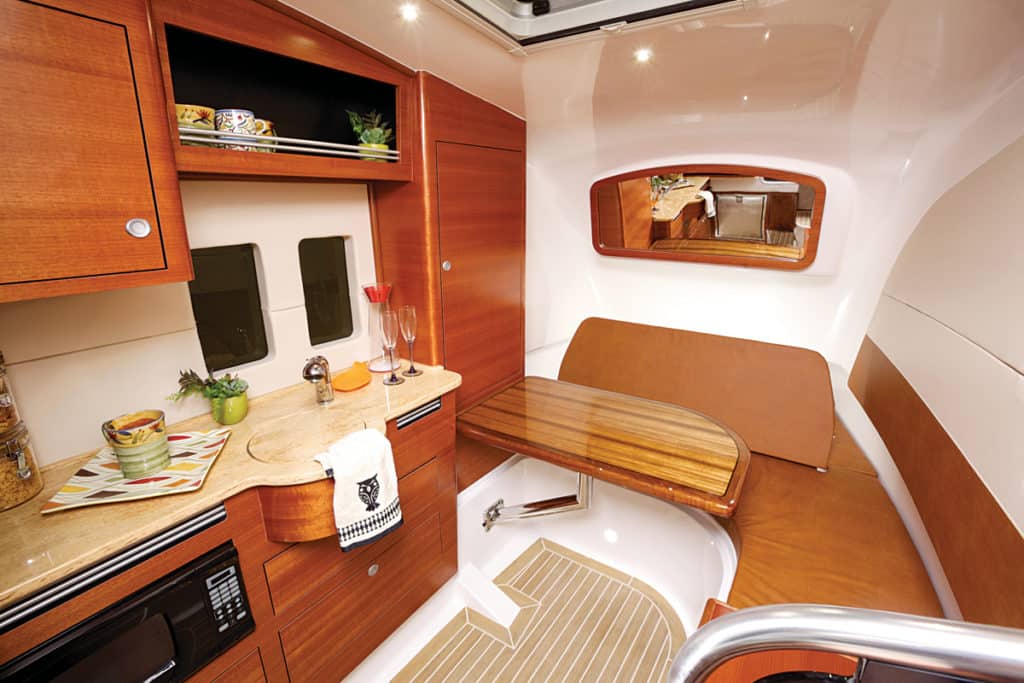
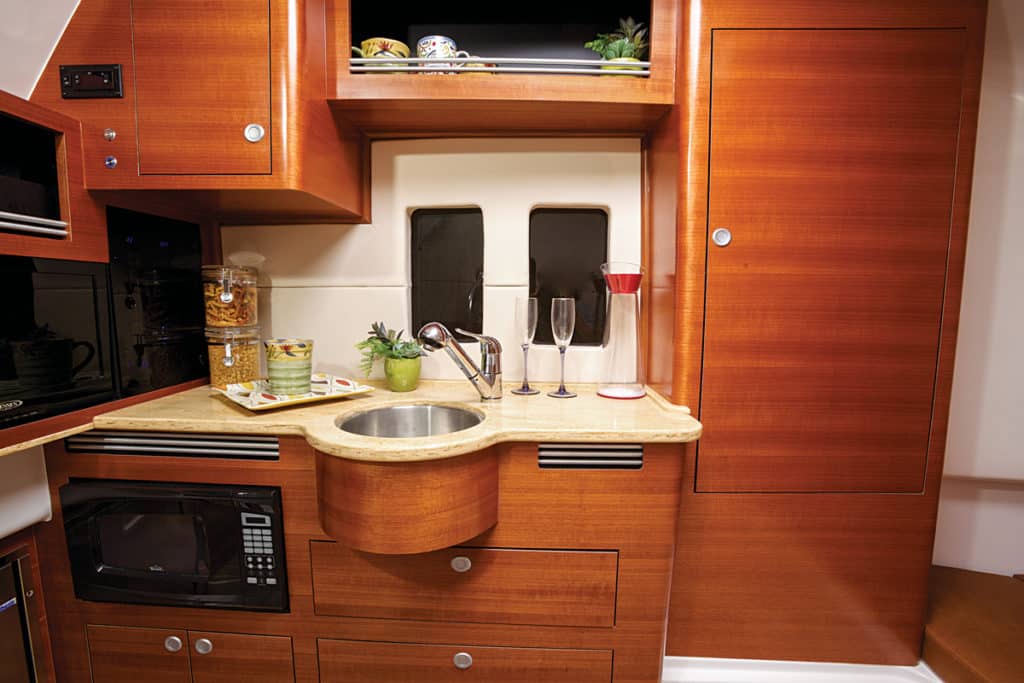
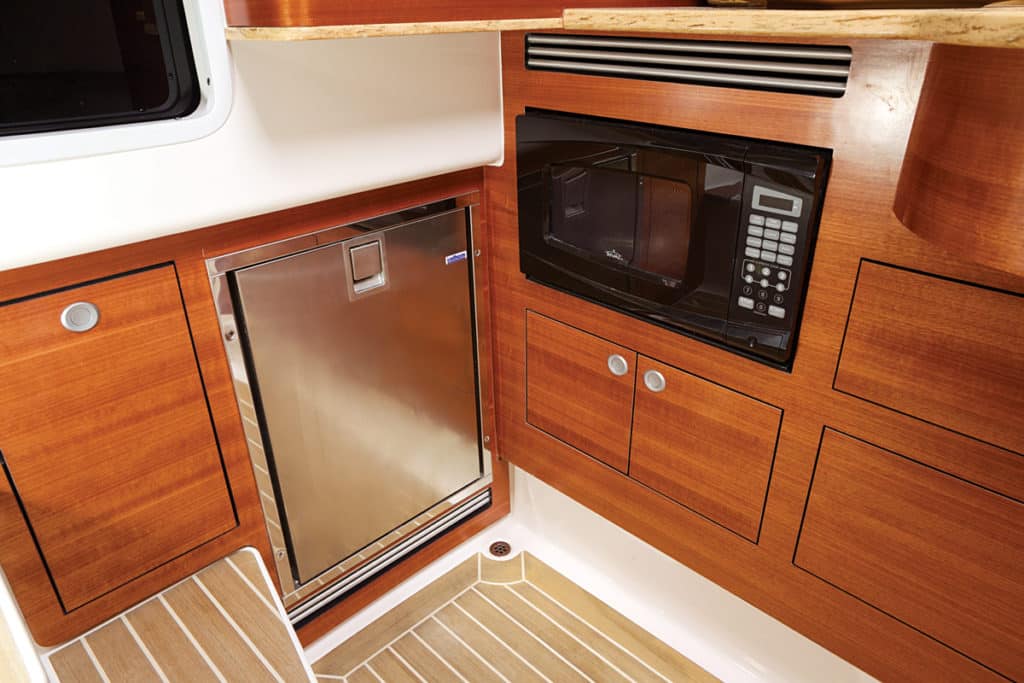
Beyond design and construction, propulsion and performance, the 368CC delivers much to be proud of. Its cabin is the largest for a center console in this class and luxuriously outfitted with lots of finely carpentered wood.There’s room for six people to mingle in this cabin, the galley is a real kitchen, and it’s well-lit and well-ventilated. Similar to competitive center consoles, there is no enclosed head, despite this cabin’s large size and airy feel. Instead, the commode resides beneath a settee.
On the bow, the seating features removable backrests and houses massive stowage in the overboard-draining fish boxes inside the seats. We just wish the stowage lids were an inch shorter so we could open the boxes without needing to remove the backrests. A slick feature is the electrically deployed table that rises from the sole. Raise it halfway to create a filler and make a lounge out of the bow.
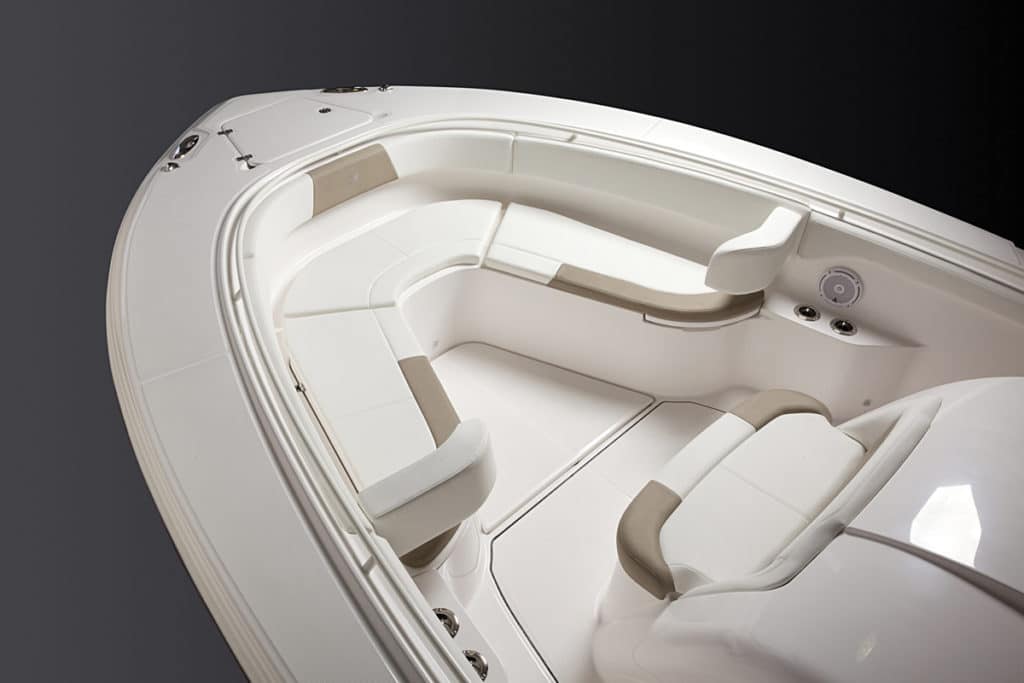
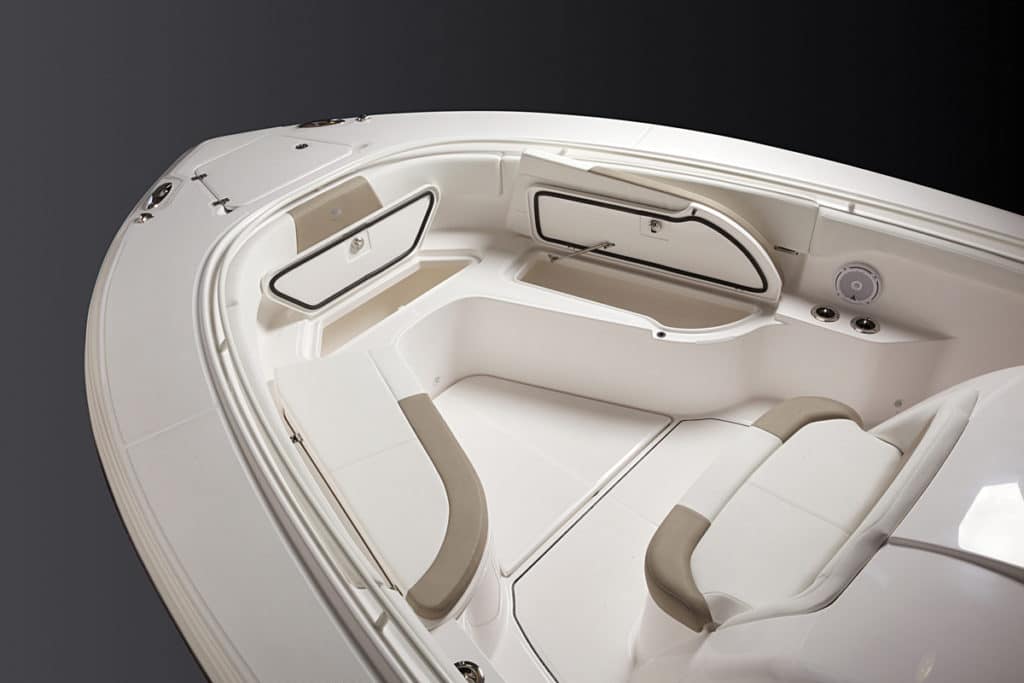
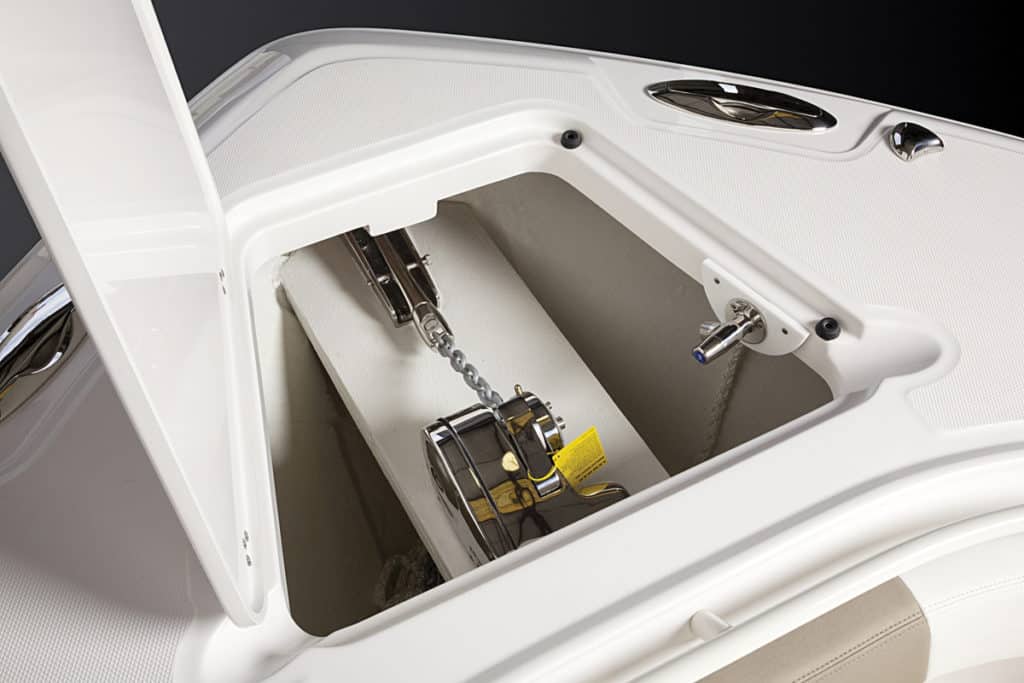
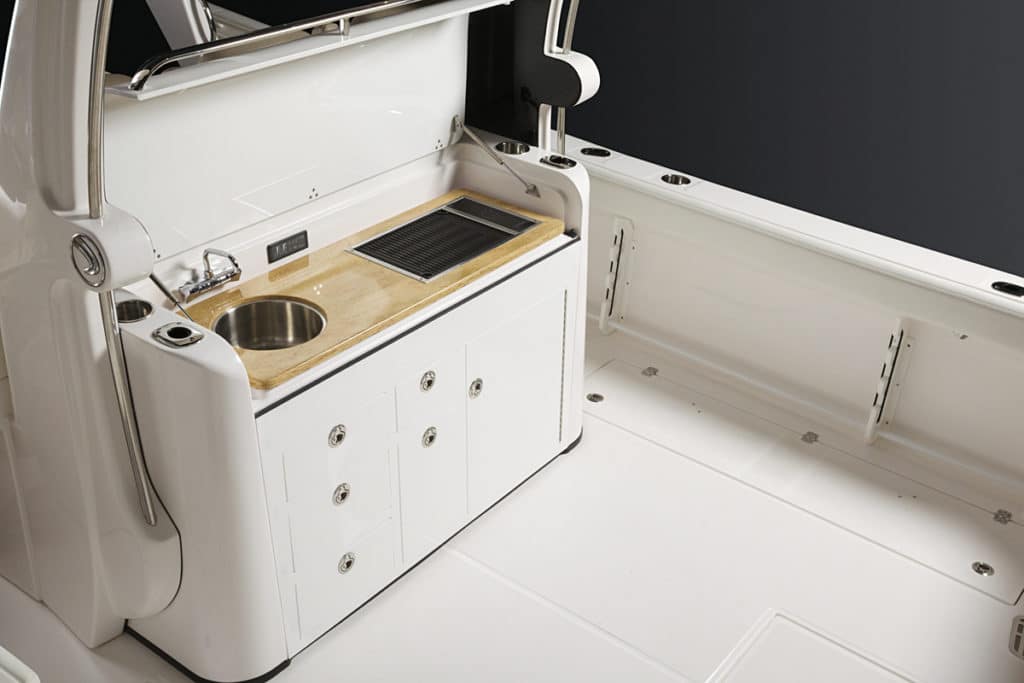
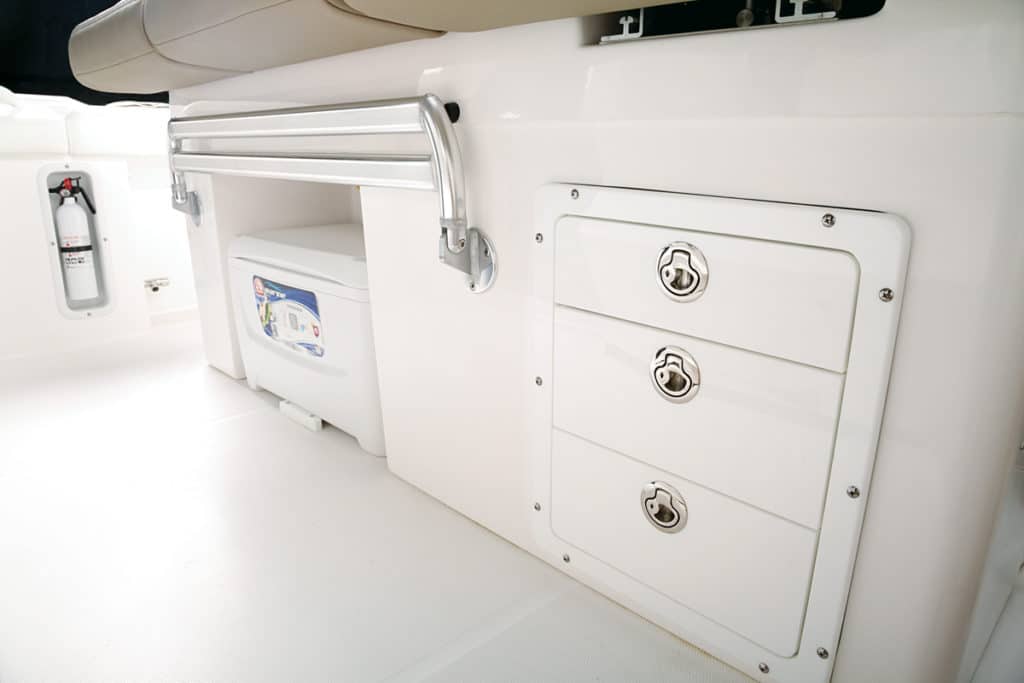
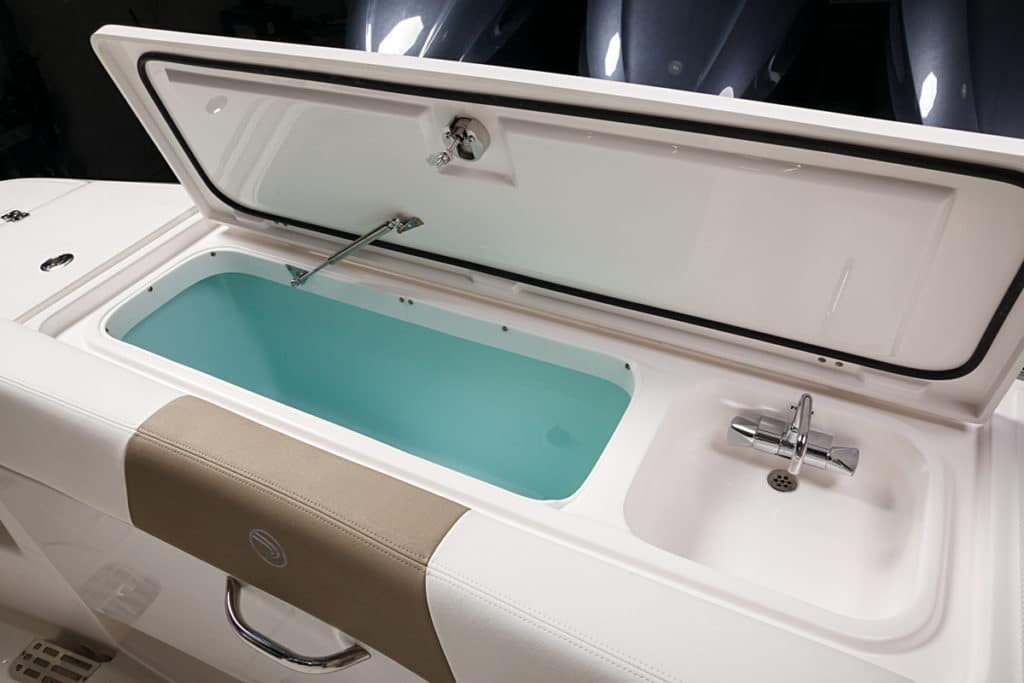
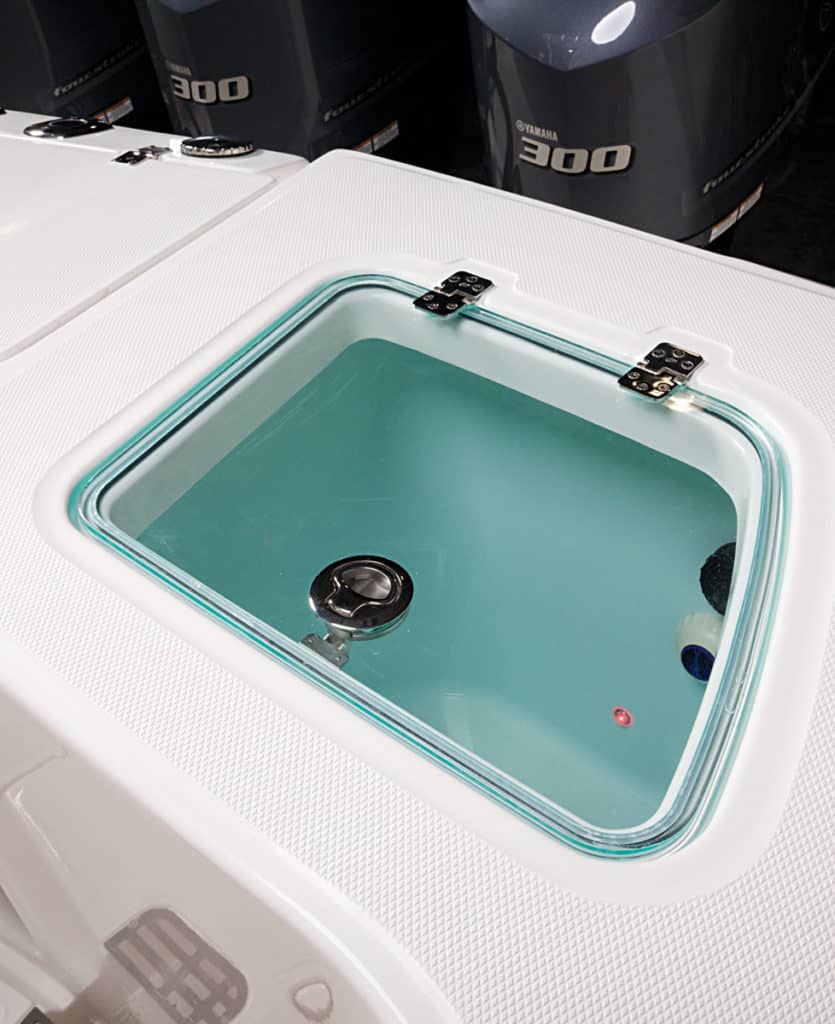
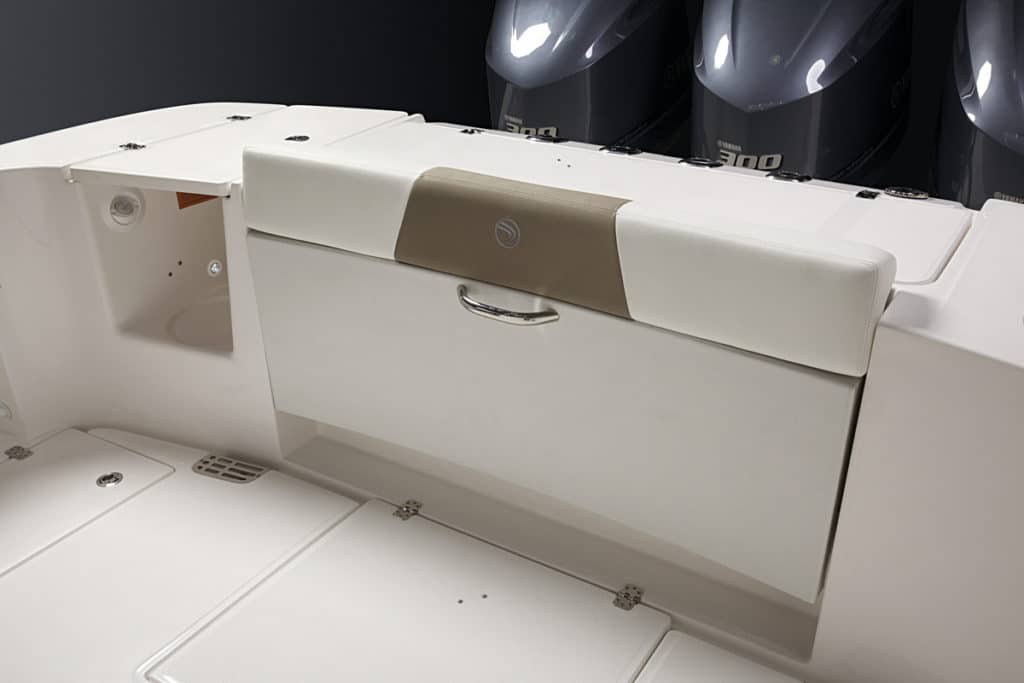
Aft, our tester sported a boarding door in the starboard side as well as one on the transom. Access to the dock, water or engines is safe and easy. This boat also boasted a grill aft of the hardtop, rather than the available seating. The grill features an automatic shut-off should something inadvertently close the lid while it’s on. All kinds of drawer and bulk stowage reside below, along with a refrigerator.
There are rod racks and two huge livewells aboard the 368CC, the latter colored a bait-soothing blue on the inside. And the boarding doors can allow whoppers as well as guests. Outriggers sprout from the high-tech carbon-fiber hardtop. Yep, you can really fish on this boat.
Service access to the bilge is via a hatch in the cockpit sole aft and centerline, through which I easily fit. The batteries are right there. Changing a fuel filter or servicing a pump requires more agility because these are located beyond a smaller cutout aft, under the engine splashwell.
For comparison’s sake, check out Boston Whaler’s 370 Outrage ($469,454, powered like our test boat). Two things are key when shopping for a boat in this class: Because equipment can vary so much, compare the prices of specific boats, not just models, and take a sea trial.
